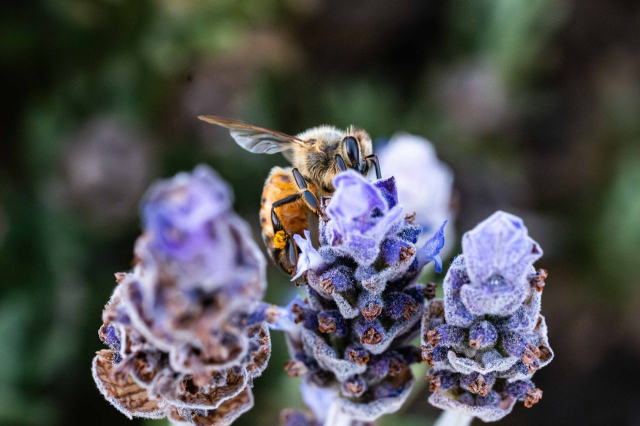Ecuador is a unique country in terms of biodiversity, thanks to its varied geography that ranges from the Galapagos Islands to the Amazon rainforests and the Andes. This diversity of ecosystems not only makes Ecuador one of the richest countries in flora and fauna, but also gives it an international responsibility in the conservation of its nature. However, this wealth faces multiple challenges due to factors such as climate change, deforestation, mining exploitation and agricultural expansion. Despite the obstacles, Ecuador has made important progress in preserving its biodiversity, which offers hope for the future.
The biological wealth of Ecuador
Ecuador is considered one of the world's megadiverse countries, a term used to describe those countries that are home to a large number of species, many of them endemic, meaning they only exist in that territory. According to the Ecuadorian Ministry of Environment (MAE), the country is home to around 10% of the world's biodiversity, despite having only 0.2% of the planet's land surface. Among its most notable ecosystems are the Ecuadorian Amazon, the Andean region, the Pacific coast, and the Galapagos Islands.
The Galapagos Islands, known worldwide for their influence on Charles Darwin's theories of evolution, contain unique species such as the giant tortoise and Darwin's finch. In the Amazon, the country is home to one of the highest concentrations of tropical flora and fauna species. In the Andes, biodiversity is equally rich, with species such as the Andean condor and numerous varieties of orchids, which are an integral part of the landscape.
Challenges for biodiversity conservation
Despite its natural wealth, Ecuador faces several challenges that threaten its biodiversity. Deforestation is one of the most serious problems, especially in the Amazon region. According to the MAE report, Ecuador has lost approximately 25% of its forest cover since the 1970s, mainly due to agricultural expansion, illegal logging and mining.
Mining, both legal and illegal, has grown in recent years, with a direct impact on ecosystems. The use of mercury and other chemicals in artisanal mining endangers aquatic and terrestrial life. The Ministry of the Environment has identified that mining activities not only destroy the habitat of various species, but also contribute to the pollution of rivers and lakes.
Climate change is also a growing threat to Ecuadorian biodiversity. Alterations in weather patterns affect both flora and fauna, especially in the high Andean areas, where many species are adapted to specific climatic conditions. Rising temperatures, longer droughts and variability in rainfall affect the health of ecosystems and endanger the species that depend on them.
Opportunities for conservation
Despite these challenges, Ecuador has made significant efforts to conserve its biodiversity. One of the highlights is the creation of protected areas, which cover approximately 20% of the national territory. These areas, both terrestrial and marine, include national parks, biosphere reserves and other conservation zones that are essential to preserve the most threatened ecosystems.
Ecuador’s National System of Protected Areas (SNAP) is a network that includes parks such as the Yasuní National Park, considered one of the most biodiverse ecosystems on the planet. The Yasuní is home to thousands of species of plants, animals and microorganisms, many of which have not yet been studied. Ecuadorian authorities are actively working to expand this network of protected areas, including marine zones, which are equally crucial for the country’s biodiversity.
Sustainability is another important focus. In recent years, Ecuador has promoted policies that integrate biodiversity conservation with sustainable economic development. The promotion of agroforestry, ecotourism, and organic production are examples of strategies that seek to balance the exploitation of natural resources with the protection of ecosystems. Ecotourism, in particular, has proven to be a significant source of income, while also raising awareness about the importance of preserving biodiversity.
Joint work with international organizations has also been key to Ecuadorian conservation. Initiatives such as the "Action Plan for the Conservation of Biodiversity in Ecuador," developed in collaboration with the International Union for Conservation of Nature (IUCN), seek to strengthen local capacities for conservation and promote scientific research on vulnerable species and ecosystems.
The role of civil society and indigenous communities
A fundamental aspect of biodiversity conservation in Ecuador is the role of indigenous communities. The indigenous peoples of the Amazon, such as the Kichwas, Shuar and Achuar, have a deep knowledge of the sustainable use of natural resources. These people have practiced a harmonious relationship with nature for centuries, using its resources in ways that ensure their conservation.
In recent decades, indigenous communities have made progress in defending their territories by obtaining rights over their lands. The 2008 Constitution recognized nature as a subject of rights, a principle that has been key in the fight against the excessive exploitation of natural resources. The implementation of these rights, however, remains a challenge, as external pressures such as mining and intensive agriculture continue to affect their territories.
Conclusion
Ecuador is a country with exceptional biodiversity that faces serious conservation challenges, but it also has a number of opportunities that can help preserve its natural wealth. The creation of protected areas, the promotion of sustainable practices and collaboration with international organizations are steps in the right direction. In addition, the active participation of indigenous communities and civil society in general are fundamental for the future of Ecuadorian biodiversity. Conservation is not only vital for Ecuador, but also for global well-being, since its biodiversity plays a key role in the ecological balance of the planet.
Sources:
- Ministry of the Environment of Ecuador (MAE) – www.ambiente.gob.ec
- IUCN –www.iucn.org
- Government of Ecuador – www.ecuador.gob.ec
